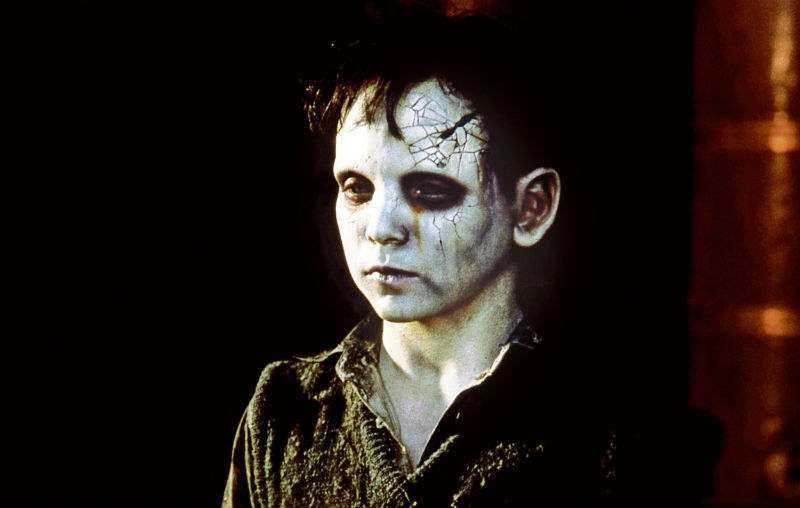
Most contemporary horror films rely too much on special effects and super fast editing to scare the audience just for the sake of it. These types of films are exclusively dedicated to ensuring that the audience is scared through the entire movie without immersing them in mystery and the fear of the unknown, something that classic films of the genre do – such as “Nosferatu,” “Diabolique,” “Psycho,” “Rosemary’s Baby,” “The Exorcist,” “The Shining” and “Alien.”
The films mentioned manage to show the elements that create the fear of the unknown in an efficient way, through a good idea, a good script, and masterful filmmaking. The objective of this list is to revalidate the films of the genre in Latin America that scare the audience by brilliant filmmaking and the efficient use of suspense and the fear of the unknown; they also immerse the audience in dark and fearful worlds without resorting to cheap jumpscares, gore, and pure special effects.
According to Bruce F. Kawin in his book “Film Genre Reader II,” the basic element of a good horror film is to take us through a story that has a structure that shows us something useful or at least worth understanding. The films cataloged as horror can be analyzed through a psychological orientation through a relationship between fantasies of brutality, sexuality, repression, and victimization, among other things. Good horror films have interesting themes and push them to the limit, such as Tobe Hooper’s “The Texas Chainsaw Massacre” (1974) or “Poltergeist” (1983) where a relationship is established with the audience’s unconscious.
Like Kawin says, “Generally (these films) involve a disguised journey to the Jungian territory of the land of the dead that can be thought of in terms of the other side.” Kawin established that a monster of a horror film can be analyzed according to Jung’s term that the evil creature is always a projection of the protagonist of the story. Within the characteristics that a good horror film should have, it also included the concept of Robin Wood, that these types of film temporarily release a repressed social and political unrest and also the need to break the system and subvert its values.
These concepts are applicable to several selected films on this list. Before defining why these films are the best Latin American horror films, it is important to understand the concept of a “bad” horror film. According to Kawin, bad horror films are those that present a mere bloody show whose sole purpose is to cause pain in the viewer’s imagination; they are attacked and brutalized with violent images that have no dramatic value, and it makes a bizarre connection between bloody deaths and sexuality. Kawin attributes these characteristics to films like “Friday the 13th” or “My Bloody Valentine.”
Now that the concept of a “bad” horror film is established, it is possible to know why the films chosen on this list are good. It is important to emphasize another analysis also carried out by Kawin, which says that it is not necessary for a horror film to have a dreamlike or supernatural element. Perhaps after the genre has gone throughout the decades through so many subgenres, this concept may be a bit obvious, but there are horror stories that don’t have ghosts or demons nor are they are not psychologically oriented. This led to three subcategories of the genre: Monster stories, Supernatural stories and Stories of madness.
These subcategories interlock with each other; this doesn’t mean that because a film is considered a monster story that it must have a supernatural element or vice versa. The films on this list will be analyzed based on these three subcategories.
1. The Devil’s Backbone (El Espinazo del Diablo) (2001)
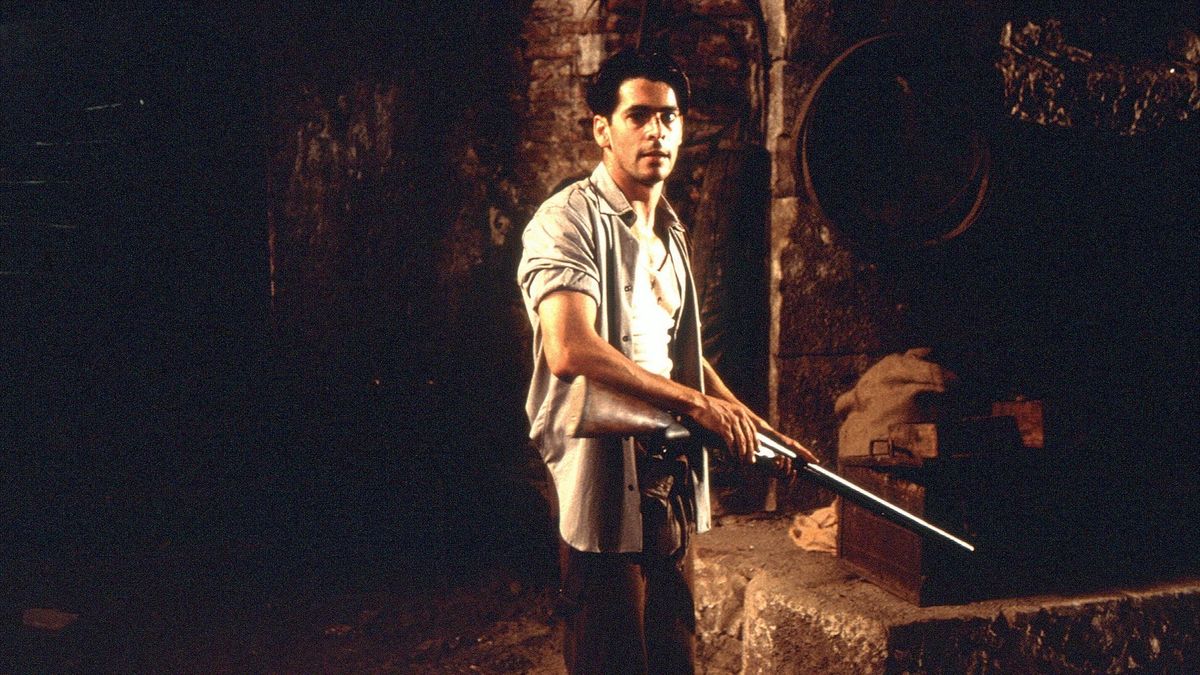
During the Spanish Civil War, a boy named Carlos (Fernando Tielve) is taken by two Republicans to an orphanage because his father died fighting against Franco’s fascist troops. Casares (Federico Luppi) and Carmen (Marisca Predes) accept the boy at the orphanage and there he meets the doorman Jacinto (Eduardo Noriega) and a teacher named Conchita (Irene Visedo).
The first day, after his arrival, he has a conflict with a boy named Jaime (Íñigo Garcés), a bully who receives him with a beating. However, Carlos begins a strange friendship with Jaime and this leads him to discover the ghostly presence of a boy who lives in a part of the building named Santi (June Valverde), who disappeared the night a bomb fell in the courtyard of the orphanage but did not explode. This presence scares Carlos and the rest of the children but thanks to him, Carlos discovers who the real monster of the orphanage is before it is too late to save his life and his friends.
The film is a classic from Guillermo del Toro. The political / social context in which the characters are immersed makes it a melodramatic story of ghosts but with its original touch, where the misery is brought by the last days of the Spanish Civil War. All the characters were involved in desperation to survive in that difficult time in Spanish history. It could be considered a classic ghost story with elements typical of a “monster story” mixed with supernatural elements. It is important to mention that del Toro, along with co-writer Antonio Trashorras, played with the idea that the true monster is not the ghost of the little boy but a good-looking man who is not a ghost, just a human being who commits atrocities by letting himself be carried away by his greed.
The supernatural element is functional throughout the film; there are scenes that achieve a captivating suspense, and the atmosphere generated by the art direction, costume design, location, sets and photography achieve the perfect combination for the transformation of this film in a gothic horror classic. Here, the haunted mansion typical of gothic terror becomes the huge orphanage building and (as any other gothic horror) there is also a ghost who seeks revenge for his death.
The architecture plays a fundamental role in the way the story is narrated through the composition of the shots, as del Toro points out in an interview: “The entire film is about the idea of ghosts being like insects trapped in amber and what César Macarrón [the art director] and I decided is that the film has to be made from archery… ” The shots composed by del Toro imprison the human figure within the enormous shadowy architecture that surrounds him.
Del Toro uses a very limited color palette and with this decision, he appropriately expresses the theme of the movie. This palette is functional for scenes that take place in daylight and also have suspense in them, something hardly ever achieved in most horror films. Through colors, the final result of the cinematography headed by Guillermo Navarro manages to involve the audience in the search for the mysteries that surround the orphanage and the characters. The casting works perfectly; Fernando Tielve does a splendid job in carrying out a large part of the film on his shoulders, especially in the scenes that have to be frightened by the presence of Santi, played by Valverde, who also crafted a compelling performance by depicting an intimidating ghost.
There is also the brilliant performance of Luppi; in this film he plays a man who loves a woman in the shadows and is totally passive when he has to act to achieve his goal. Predes also does a great job, not only acting but also having a physical challenge throughout the film; just like Noriega, who manages to humanize a character who has dark intentions. Visedo and Garcés also do a splendid job.
To conclude, this film, which was produced by Pedro Almodóvar and created a co-production between Mexico and Spain, used all the great resources distributed to all the departments to create a masterpiece of contemporary horror cinema that manages to paralyze the audience after showing in an intelligent way the fear of the unknown.
2. Cronos (1993)
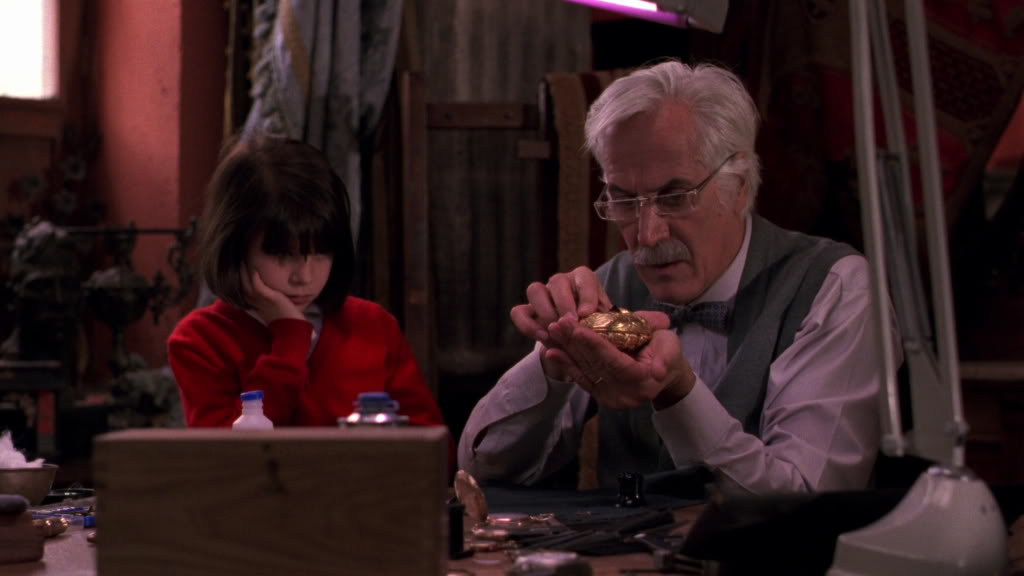
Jesús Gris (Federico Luppi) is the owner of an antique house who discovers, with his young granddaughter Aurora (Tamara Shanath), a strange golden insect-shaped artifact that was hidden in a small statue of an angel and was used by a sinister Spanish alchemist in 1953. When Gris grabs the device, two spider legs regretfully emerge and attach into his hand, while a needle injects him with a substance from an insect that mysteriously lives inside the device.
As days go by, Gris slowly develops a thirst for blood and becomes addicted to the painful device that draws his blood, but in exchange, provides him vitality and better health, generating a parasitic link with the artifact. Dieter De La Guardia (Claudio Brook), a dying businessman, has long desired the device to be immortal and upon discovering that Gris owns it, he sends his nephew Ángel (Ron Perlman) to find it. Gris must use his disturbing physical condition to defend his life and granddaughter’s after being threatened by Ángel and De La Guardia.
It is the first film by Guillermo del Toro whose screenplay has elements of fantasy and horror. It is a vampire story, but del Toro manages to give an original twist to the typical myth both for the characters (who live in a city in Mexico). This as well as for having created the saddest vampire ever made and who is hardly encouraged to lick the blood from the floor of a bathroom, being the opposite of the vampire with great powers and fangs; that is to say, the classic representation that cinema has been showing throughout the decades.
It also incorporates another original element in relation to the transformation from a human to a vampire: this transformation does not occur after the bite of a vampire to a human, but through cold and complex mechanics orchestrated by an insect that is inside a small device with the shape of a golden beetle. This new way of transformation from human to vampire explores themes similar to those used by David Cronenberg in films such as “Videodrome” (1983). Del Toro admitted that Cronenberg was a great inspiration for this film and this can be noticed after showing explicit elements of the subgenre “body horror” in “Cronos.” He explicitly shows the mutation of the protagonist’s skin, whose human flesh is transformed into something “new” thanks to an element external to his body – in this case it is a mechanical device that ends up being part of Gris’s body to survive.
“Cronos” also deals with the theme of feeling pleasure for pain, which can also coincide in the film “Hellraiser” (1987) where there are dark beings who feel pleasure for torture and pain. In the case of “Cronos,” del Toro parallels Christianity and vampirism, linking the theme of blood with various events characteristic of Christianity, such as the last images of Gris’s body representing in some way the stigma of Christ.
The monster of the film may appear to be Gris; when he transforms into a vampire, he does not end up being it (beyond its terrible physical appearance) because he does not allow himself to be carried away by his thirst for blood and the desire to live forever. This is the difference between him and his antagonist De la Guardia, which turns out to be a dark projection of his person if he lets himself be carried out by the thirst for blood and the desire to live forever. The important thing about this aspect is that del Toro makes Gris’s character a complex one because he must face his decision to become a monster or destroy what makes him feel vital but dangerous. According to the director, “Decisions are the essence of the human soul.”
Luppi is a great casting choice by del Toro. It conveys a passive elegance character. When he starts using the device, he has a presence similar to Christopher Lee’s classic Dracula. Luppi manages to transmit in a realistic way the transformations that the character goes through. It is necessary to highlight the presence of Perlman in the film; his physical features and his poor grasp on the Spanish language make him stand out among the other characters.
This was the first film del Toro worked with Perlman, a relationship that has endured throughout del Toro’s career. The film begins in an engaging way with great camera movements and splendid work from the art department, makeup effects, and costume. Among the artistic decisions, del Toro considers the texture of the colors and shadows to hold the central theme of the story.
This is a film that is not only one of the best of the genre in Latin American cinema, but also an opportunity to understand more deeply the type of worlds that Guillermo del Toro will create later in the rest of his career.
3. The Black Vampire (El Vampiro Negro) (1953)
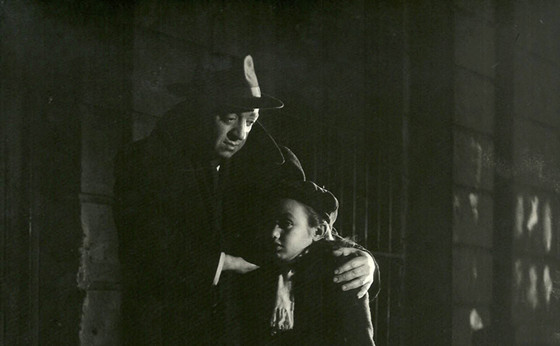
Bernar (Roberto Escalada) is a prosecutor investigator who wants to capture a serial killer of little girls. After investigating the territory where the first victim was found, he concludes that the murderer must have been in a cabaret near the area. He interrogates the attractive singer Amalia (Olga Zubarry), who saw the killer on the night of the crime but does not dare to tell Bernar. A few days later, another murder happens in the city and Bernar becomes more rigorous in the investigation while Amalia inadvertently opens the doors of her home to Teodoro Ulbert (Nathán Pinzón), a man who appears to be a harmless but strange professor who becomes obsessed with Amalia’s little daughter.
The film is a remake of Fritz Lang’s film “M” (1932), adapted to Argentine cinema. The plot takes place in the city of Buenos Aires and thanks to these changes, the film does not end up being a copy of its predecessor; on the contrary, it manages to be an original remake and also has several scenes that pay tribute to Lang’s work. At times, director Roman Viñoly Barreto portrays the killer’s psychosis through his point of view, through the subjectivity of this murderous and dark mind.
As well, the audience is inside the strange world of the killer’s mind where voices are distorted and he is intimidated by how people look at him. Barreto shows this tortured mind through a montage of different faces that look at the camera, which is reminiscent of German expressionist cinema (which “M” belongs to), as well as the use of long shadows, elements also typical of the noir genre of the ‘40s and ‘50s (where Barreto’s film comes from). This formalist cinematographic language is a great way to create a dark mood that this kind of film must have.
Despite the fact that the title of the film has the word “vampire,” there is no supernatural element in the plot; there is only one scene in which Bernar makes an analogy between the murderer and an ancient legend of a specter who drinks blood from his victims. It is a clever story of the capture of a rapist madman with two personalities who stalks his victims like a bloodthirsty vampire. The cast features Roberto Escalada, a well-known Argentine actor who does a great job interpreting a rigorous prosecutor who applies a heavy hand use of the law to his suspects.
On the other hand, there is the young and attractive Olga Zubarray who has had a long career in Argentine cinema, theater and television. And lastly, there is the performance from Nathan Pinzón, an outstanding Argentine television and film actor, who played evil characters in most of his career due to the characteristics of his face. In the case of this movie, he plays it brilliantly when he succumbs to his double personality, reminiscent of Peter Lorre’s iconic performance as Hans Beckert in the movie “M.”
4. Terrified (Aterrados) (2017)
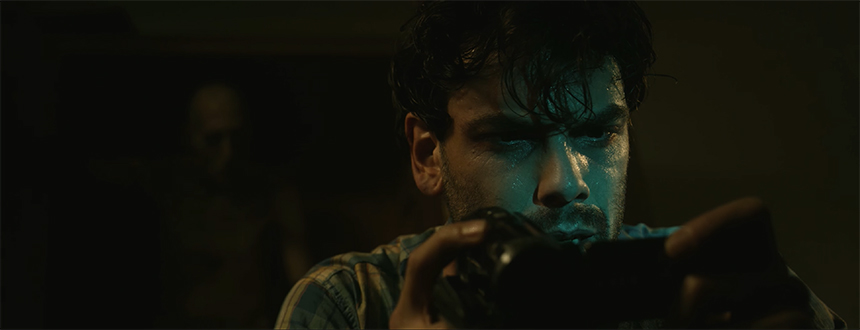
Some paranormal events occur in a neighborhood of Buenos Aires: a woman is mysteriously killed by an invisible presence, a child suffers a deadly accident and returns from death, and finally there is a young man who suffers the presence of a monstrous man at night when he goes to sleep. This series of events makes Jano, an investigator of an insurance company, begin to investigate what happens with his friend, the commissioner Funes and also with Rosentock and Albreck, two paranormal investigators. They will try to clarify the mysteries that take place in the three affected houses in the same neighborhood, but they will find that what they know will be the greatest danger of their lives.
The film is directed by Demián Rugna and it turns out to be an unexpected film with a script that constantly plays with the unknown. The audience cannot decipher what is happening in the neighborhood because the three paranormal events are different from each other, which generates intrigue and mystery. It is a supernatural story that has some kind of Lovecraftian influence when Rosentock explains to Funes about the possible origin of monstrous beings who are from another dimension and attempt against human life. The performances are plausible and the suspenseful scenes are disturbing.
An intelligent horror is built up on the audience: the creatures that attack the protagonists are barely shown and the use of gore is to provide dramatic functionality. It could be considered the best film of the genre in recent years in Argentine cinema. Its simplicity that everything takes place in a neighborhood makes it even more disturbing since it generates familiarity and at the same time a dangerous environment. Finally, the dynamism of the times (present and past) is well done, like the way in which the characters’ points of view changes, making the film even more unpredictable.
5. Aunt Alejandra (La Tia Alejandra) (1978)
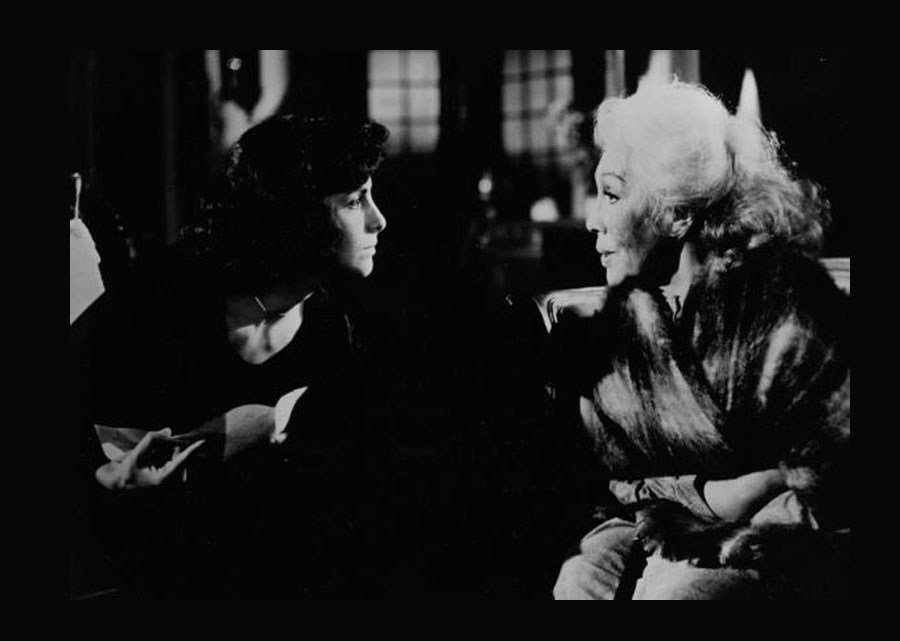
Rodolfo (Manuel Ojeda) and his wife Lucía (Diana Bracho) live in an old house in a city in Mexico with their son Andrés (Adonay Somoza Jr.) and their two daughters, Martita (María Rebeca) and Malena (Lilian Davis). Rodolfo’s aunt, Alejandra (Isabela Corona), arrives at the family home after her mother’s death and moves with her belongings since she wants to financially help her nephew’s family. Martita and Andrés notice that Alejandra’s presence is sinister and causes rejection, but her parents do not pay attention to them until strange events begin to happen in the house; the walls and the floor tremble and Alejandra begins to generate different devilish tragedies in the family. Rodolfo and Lucía will have to find out their aunt’s true intentions before it is too late for them and their children.
The film is directed by legendary Mexican director Arturo Ripstein. His vision and the performance from Corona gives the film a good construction of subtle restless horror, mystery, and violence. It is a strange film within the genre in Mexican cinema that deals with the supernatural elements related to curses, black magic and Satanism. At times it could be related to a possible influence of Roman Polanski’s “Apartment” trilogy, more precisely “Rosemary’s Baby” (1968) because it deals with a plot that contains a Satanic conspiracy orchestrated by an old woman who appears to be kind but is actually part of a diabolical cult in which a doctor conspires with her to help her neutralize his victims. In this case, instead of being a couple like in “Rosemary’s Baby,” it is a family with three children.
The film has its identity by using Mexican occult traditions in relation to the dead and in addition to spending time in an old house in Mexico, which helps to add a disturbing and unexpected environment. There are no scenes of explicit violence; on the contrary, it is a film that intelligently and subtly handles the horrible actions of the menacing Alejandra who haunts the whole family with her darkness. Ripstein tells the story in a masterful and dynamic way and the tragic events happen really fast, creating a sense of realism.